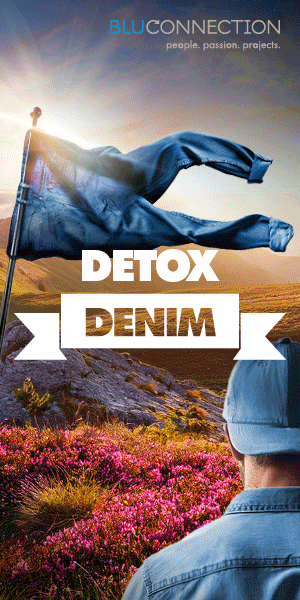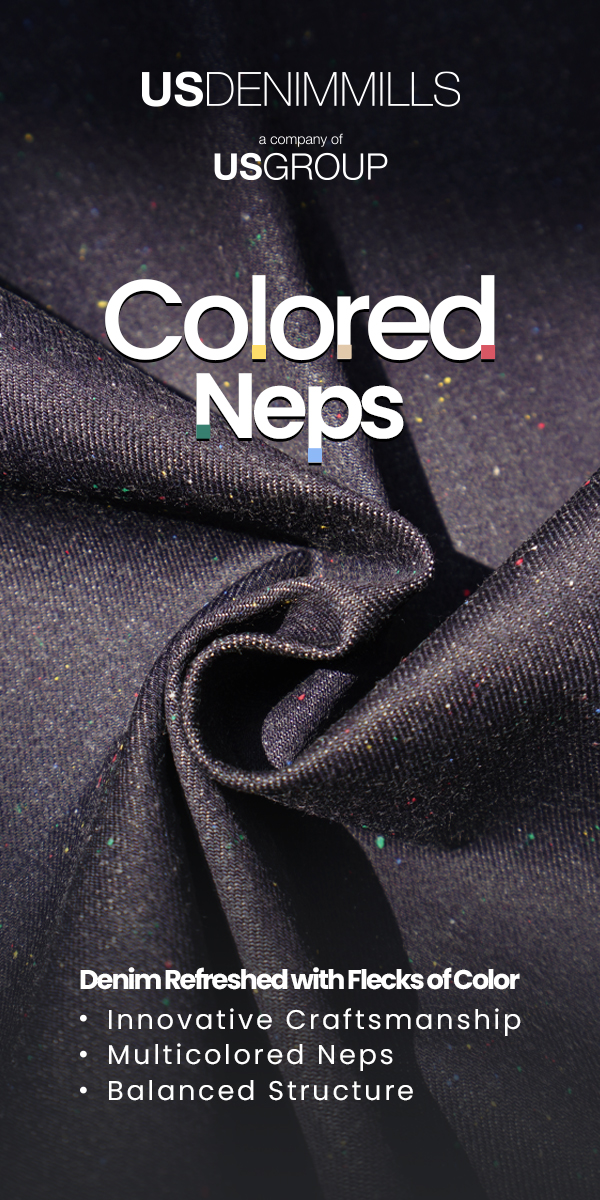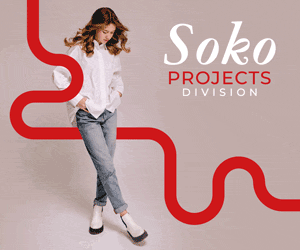Partners prepare to take AeoniQ forward

Last year, HeiQ introduced AeoniQ yarn as a climate-positive (the raw materials capture rather than emit carbon) alternative to polyester and nylon. Now the fashion world is paying careful attention.
Apparel brand Hugo Boss has emerged as a strategic investor in HeiQ AeoniQ, a subsidiary that materials innovation specialist HeiQ set up towards the end of last year. AeoniQ is a cellulosic yarn derived from renewable raw materials. HeiQ attracted high levels of attention when it introduced the new product last year, saying it had the potential to replace polyester and nylon in the global apparel market.
It said it wanted to work on “very deep innovation partnership and go-to-market strategies” with two strategic partners and immediately presented The Lycra Company as the first of the two. Early this year, it presented Hugo Boss as the second. The fashion brand is making an initial investment of $5 million in equity in HeiQ AeoniQ and has said a further $4 million will follow if the partnership achieves certain performance milestones and agreed goals.
A complement, at first
The apparel company has said that using AeoniQ will help it meet ambitious sustainability targets that it has set itself, including its aim of achieving climate neutrality. It wants to reach this within its own area of responsibility by 2030 and throughout its entire value chain by 2045. In addition, the company aims to establish an end-to-end circular business model. It has said specifically that, in the medium to long term, it sees the potential of using AeoniQ first to complement the polyester and nylon fibres it puts into its clothing, and then to replace them. Chief executive, Daniel Grieder, has described the “exciting partnership” through which it will help scale up the production of AeoniQ as game-changing. He says it will drive “measurable impact for the environment and society alike”.
Hugo Boss has told Inside Denim that, in 2020, synthetic fibres made up around 20% of its material consumption, and that these fibres are in extensive use in the wider fashion industry. However, they also play a major role in the problem of microplastic pollution in the oceans. AeoniQ appeals to Hugo Boss because of the promise of reducing pollution and of decarbonising the fashion industry without setting aside extra agricultural land for growing cotton.
Ramping up
It is aiming to include AeoniQ fibre in a series of small capsule collections in the second half of this year and to have “a much more impactful ramp-up” in 2023. HeiQ is still in the process of securing investment to build a mass-manufacturing plant for AeoniQ by the last quarter of 2024. It does not yet know where this facility (it uses the term gigafactory) will be, but it estimates it will have the capacity to 30,000 tonnes of the yarn per year, meaning that, by early 2025, it will be able to offer what it calls “recurring mass deliveries” of AeoniQ. Hugo Boss has said that, when this day comes, it intends to establish “an even deeper integration” with HeiQ.
What has given Hugo Boss the confidence to already invest millions in this project is the potential it sees in AeoniQ for providing “a cellulosic alternative to synthetic fibres” at the right scale and with an “outstanding” environmental, social and corporate governance profile. Unlike oil-dependent polyester and nylon, the material that mills will be able to make from AeoniQ will have a stable cost structure and its use will be ‘business as usual’ for weavers, knitters and dyers; they will not have to invest in new machinery. “To our knowledge, no other existing yarn offers the same competitive capacity regarding key performance indicators such as performance, scalability and sustainability,” Hugo Boss says.
Market access
In its most recent public comments, The Lycra Company has said it wants to continue to work closely with HeiQ to “fast-track the commercialisation of AeoniQ”. It will be the exclusive distribution partner for the new yarn. Clearly, then, it is in Lycra’s interest as well as HeiQ’s to convince brands to include AeoniQ in their material mix. “The approach is to combine both companies’ capabilities to establish a pilot plant stage,” Lycra’s chief brand and technology officer, Steve Stewart, tells Inside Denim, “and then move to full-scale production as quickly as possible.”
HeiQ will source ingredients, develop the fibre, and build manufacturing facilities. Lycra’s Steve Stewart says the company’s “deep knowledge” of textile processes, and of quality and product requirements, will help it bring the yarn to market. “This summer, our development labs will evaluate the fibre properties and fine-tune as needed for specific application needs,” he continues. “We will also focus on providing yarn and fabric best-practice processing guidelines and technical service resources to enable mills to deploy the technology easily.” It aims to use its “textile market value chain access” to introduce key customers to AeoniQ quickly and will also work closely with early adopters on developing what Mr Stewart calls “relevant consumer communications that highlight the unique properties of this fibre”.
These characteristics include an exceptional tenacity, according to Lycra, and this allows the fibre to be texturised, coloured, and processed into high-performance quality fabrics for activewear, denim, and other applications. It will combine well with Lycra fibre, if garment manufacturers use it, without detracting from comfort, fit, and shape retention. Specific to denim, this is also true of combinations with Lycra dualFX fabric technology, which uses two stretch fibres to enhance the stretch of denim fabric. The strength of AeoniQ, coupled with the potential to produce it from a variety of carbon-negative cellulosic sources, or used cellulose, could have a transformative influence on the textile industry, the fibre producer says.
Revolutionary solution
Lycra has polyester and nylon products of its own, but it has not hesitated to join HeiQ’s effort to replace these petrochemical-based fibres with AeoniQ. “Sustainability is central to our company strategy,” Steve Stewart says. “We are focused on opportunities where we can bring value-added technologies to help our customers create and bring to market fabric and garment offerings that combine comfort and performance with the potential to reduce environmental impact.” He says Lycra is proud to partner with HeiQ, and to work with it to market “a potentially revolutionary solution”.
Beyond denim
Denim designer Adriano Goldschmied is another figure from the fashion world to have shown early interest in AeoniQ. He points out that in the denim business the use of polyester and nylon is more limited than in the wider fashion industry. He acknowledges, however, that polyester plays an important role in stretch denim and he regards it as “imperative” to find substitutes that are not derived from petroleum. AeoniQ could be an option, Mr Goldschmied thinks, although tests and proofs are still required.
“My interest goes beyond denim,” he says. “My dream is to bring indigo-dyed fabrics into performance apparel. AeoniQ is a cellulosic fibre, which means for sure that it can be indigo-dyed. This means we can bring the look of faded jeans into outerwear, into shoes and into sporting goods. This could be a fantastic opportunity to make an important addition to the look and fashion direction of all those products while, at the same time, making them more sustainable.”
Photo: Hugo Boss













